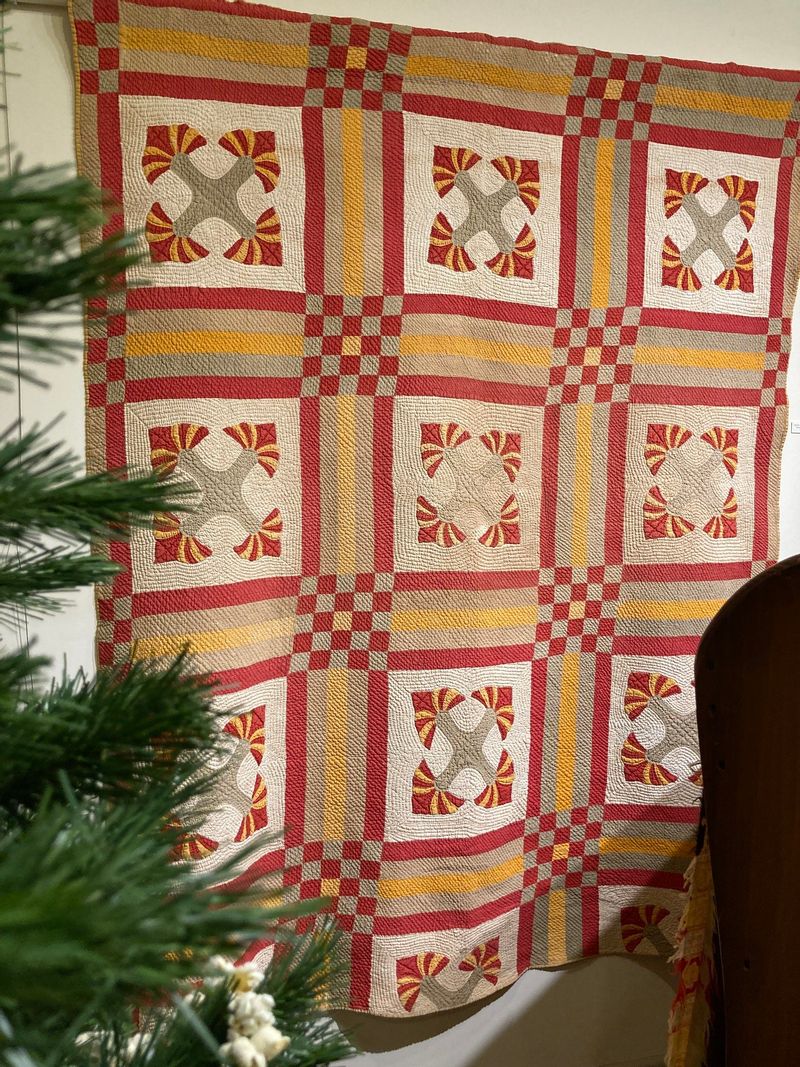PIONEER CHRISTMAS
Last Updated 12/29/2023
By ESTHER NUNLEY

Original Publish Date: December 19, 2022
Experience the simplicity and warmth of the many different artifacts dating as far back as the early 1800s of a pioneer home at Christmas time with a visit to our special exhibit at the McMinn County Living Heritage Museum.
Families and friends coming together at Christmas is a tradition that has been carried on throughout all the ages. Our vintage table is set with ironstone serving plates, solid pewter goblets, and a handmade bread bowl full of loaves of bread. Dinner could be a roasted turkey with all the fixings or simply a big fat hen from the barnyard. Fruit and vegetables in storage were brought out and enjoyed. It was also a time of year that fresh oranges became available—sweet and delicious! The Christmas story is told in all the churches regardless of the denomination. It is a never changing story of God’s love and mercy.
A look through years of the Athens Post around Christmas time reveals celebrations taking place similar to ones that we share today. Christmas celebrates the birth of Jesus Christ. God sent “his only begotten son” to pay the eternal price of sin for everyone. The news was first told by an angel who appeared to shepherds watching over their sheep one night. It was scary for them. Who was this? Luke, Chapter 2, found in the Holy Bible tells us what happened. The angel told them to “Fear not” because he had something to tell them that would be the best news to all of the people in the world. “For unto you is born this day in the City of David a Savior, which is Christ the Lord.” The news traveled and many went to see him and to give him gifts. The gospel news still travels throughout the world as people hear and accept his gift of salvation. “It Came Upon a Midnight Clear”, “Joy to the World”, and “Silent Night” are just some of the carols sung in celebration of his birth every year during the Christmas season.
Our exhibit is of a one room cabin similar to what the earlier settlers would have lived in. There is the fireplace, the dinner table, a primitive rope bed, handmade furniture, hand stitched quilted and woven pieces, and so much more to explore. Evergreens and fruit adorn the fireplace mantle and there are two evergreen trees decorated ready for gifts to be tucked underneath. One is strung with traditional popcorn and dried orange slices. A vintage rocking chair made by slaves at the c. 1845 home of John Franklin Sherman in Niota is by the fireplace. It has a woven bottom with a slat backing. The arm piece and rocker pieces are styled with unique rounded shaping.
This room is known as the Keith room honored by a plaque given by Catherine Keith in memory of all that the family contributed to McMinn County and Tennessee since first settling here in 1820. Judge Charles Fleming Keith pioneered his way to McMinn County after being appointed the first judge in East Tennessee and he served for 47 years. He moved his family to the area that we know as the Mayfield Farm. His home was the first brick home in McMinn County with the brick being fired right on the property. It unfortunately burned down. Since that tragic event, a new home was constructed on Keith Lane not far from the Museum. It remains privately owned. The cemetery on the Mayfield property holds the late Judge Keith and family. A Bible monogrammed “Alice” that belonged to Marshall and Catherine Keith’s grandmother is part of the exhibit.
When the Keith family settled here, they lived among the native Cherokees and the Judge was highly regarded by them. John Ross (b. 1790, d. 1866) became Chief of the Cherokee in 1828. A portrait of his wife Quatie Ross (b. 1791, d. 1839) is part of the exhibit. Her full name is Elizabeth Quatie Brown Ross. She had been married and had one child before she became the wife of Ross. They had five children together. After Quatie died, Ross married Mary Stapler (b. 1826, d. 1865) and they had two children.
Three of our antique quilts are also featured in this exhibit. The first is an applique and hand-pieced quilt named “Checkerboard and Tulips” believed to be created in the mid-1800s. The top is cotton and muslin in solid colors. The back is cotton and the binding is a plain weave hand sewn. The second quilt is on the vintage rope bed called “Sawtooth Flower.” It was hand pieced in the late 1800s using bright colors of red, yellow, and green against a white background. The third one is the “Double Irish Chain Quilt” thought to be made in the 1850s by Charlotte Lafayette LeSueur Gaulden (b. 1825, d. 1889) of Brooks County, Georgia. The quilt is close to nine square feet and considered large and may have been made for a four-poster bed. It is featured in our very own quilt book “Stories Among the Threads” by Suzanne Hill McDowell and Mary McFee Alton available in our gift shop.

